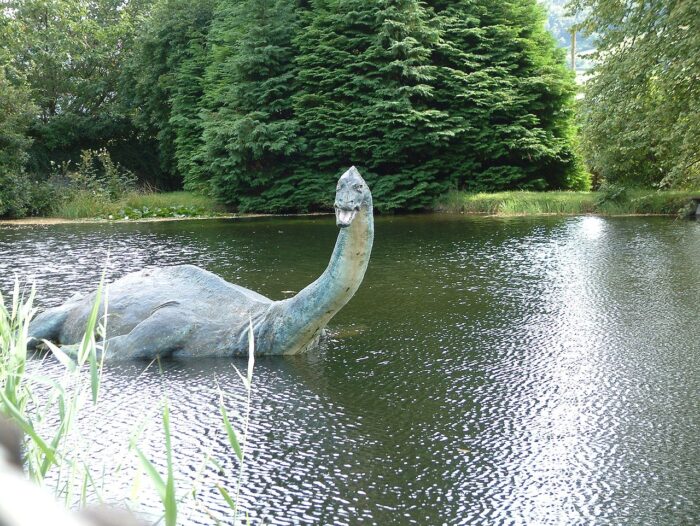Alongside Bigfoot and the Yeti, there are few mythical creatures that are as popular as the Loch Ness Monster, or Nessie.
The study of these beasts is called cryptozoology. And even though there is no solid evidence that these creatures exist, many people believe that they are out there still waiting to be discovered.
Case in point, on Saturday August 26, the largest search in 50 years for Nessie will take place. The event is put on by the Loch Ness Centre, located in a village called Drumnadrochit, and a research team called Loch Ness Exploration. Tourists and monster hunters are flocking to Loch Ness to lend a hand—or at least say that they were there!
Is it real biology? Some people scoff at the event, but the organizers say that you can be both skeptical and curious about a possible unknown creature swimming in Ness' cold, dark waters.
After all, Loch Ness is quite deep!
Deep and dark

Loch Ness has more water than all of the other lakes in Great Britain combined. (Wikimedia Commons/Gregory J Kingsley)
Loch Ness is a long, narrow freshwater lake found in northern central Scotland (loch is Scottish Gaelic for "lake"). This is a mountainous area called the Scottish Highlands.
Loch Ness is the second-largest lake in Scotland by surface area (how wide and long it is), but it is also very deep, about 230 m (750 ft.). Because it is so deep, researchers say that it has more water in it than all of the other lakes in Great Britain combined. (Scotland is considered a part of Great Britain, along with England and Wales.)
The water in the lake is also quite dark. This is because it has a large percentage of peat in it, which is a heavy soil full of organic matter.
So. A long, narrow lake, nestled in between mountains, that is remarkably deep and full of dark waters.
Sounds like the perfect spot for the mythical creature to hide out!
The monster lurks!

This photo became world famous as possible proof of the monster, until it was revealed to be a neck and head made of putty attached to a toy submarine! (Wikimedia Commons/Daily Mail)
That's what believers in the Loch Ness Monster have thought, too!
Supposed sightings of the beast date back centuries. But things really started to pick up in the early 1930s, when multiple reports started to come in about a massive animal that had a long neck and small head, like a plesiosaur or dinosaur. Then in 1934, an actual photo (known as the "surgeon's photograph") appeared to be taken of the creature's neck and head poking up through the water.
Decades later, the photo was revealed to be a hoax (fake). In fact, nearly all of the major claims of monster sightings have been analyzed and debunked (proven to be fakes).
So why do people still believe? And why are people running a new search this month?
The search is on

Many theories suggest that the Loch Ness Monster would look like a plesiosaur, like this model found at the Museum of Nessie. Others say it would be a giant eel. (Wikimedia Commons)
For starters, it's just fun (and very human) to believe in mysterious things.
And as scientists point out all the time, we have a lot left to discover about life in the deep sea. And even if Loch Ness is like a small pond compared to the deep Pacific, it is still a deep body of water that is very difficult to research.
That is why many still hold out hope of being the person to say that they finally found Nessie.
This group will also be armed with the best array of equipment ever used in a search of the lake, including thermal imaging drones (which can track body heat), underwater microphones called hydrophones, and hundreds of cellphone cameras and webcams.
Will they be successful? From the sounds of it, as long as they get out there and have fun searching, it is already a guaranteed success.
As Loch Ness Exploration founder Alan McKenna told CBC, "You're looking over this beautiful loch and the beautiful hills around you. I've never had a bad day [searching on the lake], even in the pouring rain."
Good luck, explorers!
 A view of Loch Ness, a deep lake that is still full of mystery. (ID
23950378
© Bo Li
|
Dreamstime.com
)
A view of Loch Ness, a deep lake that is still full of mystery. (ID
23950378
© Bo Li
|
Dreamstime.com
)








